US combat lasers: almost ready to be adopted
Now in the United States, a number of promising laser combat systems are being developed with different features and characteristics. To date, the level of technology development has made it possible to move from experiments and experiments to the creation of full-fledged combat systems suitable for putting into service. It is expected that work on these projects will be completed in the coming years, and new weapon will receive all the main branches of the armed forces.
General trends
In the past decade, Pentagon research organizations and commercial contractors have shown remarkable progress in the field of combat lasers. Due to modern ideas and technologies, it was possible to bring the technical characteristics to a level that meets the requirements of real operation.
The progress of recent years is primarily due to the use of the so-called. solid state lasers. Modern samples of this kind, used in various projects, have a power of 5-10 to 300 kW. At the same time, the laser and related equipment have limited dimensions and weight, as a result of which they do not impose particularly high requirements on their carrier. This contributes to the emergence of new complexes on different platforms.
The achieved power level does not allow fighting protected targets, however, it practically guarantees the defeat of a number of objects, incl. moving. The possibility of successful destruction of unmanned and manned aerial vehicles, unguided missiles, artillery shells, etc. has already been shown. The range of destruction of such targets, depending on the laser power, does not yet exceed 20-30 km.
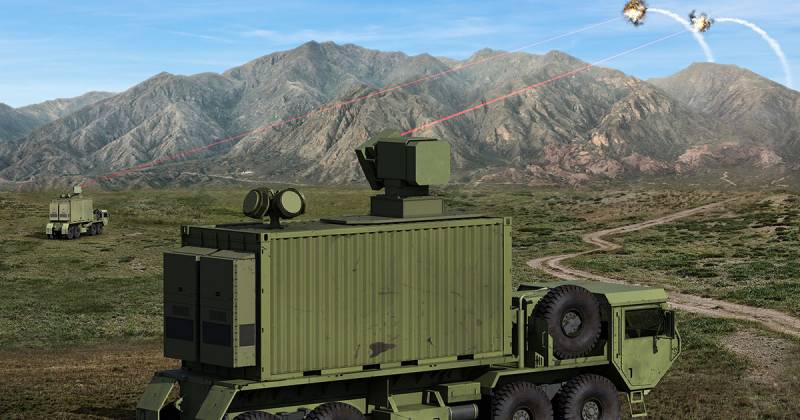
Possible appearance of a future 300-kilowatt laser from General Atomics and Boeing. General Atomics graphics
The actual needs of the Pentagon and the achieved level of performance have determined the current state of affairs. At present, almost all combat lasers in the United States are being developed as a means of air and missile defense of the near zone. Such weapons have advanced far enough, and in the coming years, the first samples should go to combat units. Laser complexes for other purposes are also being developed, but their number is small, and the prospects are often vague.
Army projects
The US Army has shown the greatest interest in combat lasers, and this has already led to the start of a number of projects with different characteristics. The fact is that the military air defense of the army has long failed to meet modern requirements and is unable to deal with modern threats. For this reason, new anti-aircraft weapons are being developed right now, including combat lasers of various types. The lasers will be responsible for the defense in the near zone; they will have to intercept UAVs, guided weapons and artillery shells.
The best results so far are shown by the Direct Energy Maneuver Short-Range Air Defense (DE M-SHORAD) program, which was launched in 2019. Now prototypes of such equipment, developed and built by Raytheon, are undergoing field tests. Already next year, they plan to launch experimental military operation on the basis of one of the combat units.
The DE M-SHORAD project provides for the placement of laser equipment on a serial Stryker wheeled chassis. The combat and airborne compartment accommodates power supply and cooling equipment, control devices, etc. An emitter optical system is installed on the roof of the vehicle, which provides beam guidance, as well as optics for searching for targets. The complex is based on a 50 kW solid-state laser. The exact combat characteristics were not reported.
With an eye to the distant future, a similar complex with higher characteristics is being created. In late October, the US Army awarded General Atomics Electromagnetic Systems and Boeing an order to develop and manufacture a high-power mobile laser. This project will be based on both proven and new technologies, which will reduce the development time and entry into service.
The new complex is reportedly to be built around a 300-kilowatt distributed-pumped solid-state laser. All units will be housed in a standard 20-foot container that can be operated on a self-propelled chassis or in a stationary position. Depending on the type of target, the range can exceed 20-30 km. The range of targets to be hit will remain the same: various types of air attack weapons and artillery ammunition.
First in the KMP
In 2019, the Marine Corps adopted combat lasers for the first time. These were the Boeing Compact Laser Weapon System (CLWS / CLaWS) complexes in a portable and transportable version. The resulting products entered experimental military operation, according to the results of which the ILC was supposed to draw conclusions about both the new model and the entire direction as a whole.
The CLWS complex includes several main units, incl. laser power up to 10 kW. Such characteristics make it possible to suppress or defeat optics, as well as to burn through light structures at distances of several kilometers. The complex for the KMP is distinguished by its small size and weight: it can be carried by the forces of calculation or installed on any suitable vehicle, receiving a self-propelled combat vehicle.
Trial operation and improvement of the CLWS complex continues to this day. Nevertheless, in the near future, all these processes will be completed, and the combat laser will be officially adopted.
Air Force Laser
The Air Force sees combat lasers as a promising weapon for combat aviation - fighters and attack aircraft, manned and unmanned. Moreover, the first project of its kind, called the Airborne High Energy Laser (AHEL), is successfully passing the first stages, and flight tests will begin soon. In the absence of difficulty, in a few years, mass production and deployment of such weapons is possible.
Development of the AHEL product began in 2017 in the context of the future modernization of the AC-130 fire support aircraft. Its next modification, the Ghostrider, was offered to be equipped not only with guns and missiles, but also with a laser. The development of such weapons is carried out by Lockheed Martin. In early October, she announced the successful completion of factory tests of an experimental laser. In the coming months, the Pentagon will host it for its own checks. After ground tests, AHEL will be delivered to the AC-130J aircraft.
According to known data, the AHEL project provides for the use of a 60 kW solid-state laser. The main equipment of the complex will be placed inside the carrier aircraft, and the emitter can be installed on its bottom, incl. with the possibility of cleaning inside. It is expected that the laser will significantly expand the combat capabilities of the aircraft, as well as give it some new functions.
Ship weapon
Several types of combat lasers have already been tested on US Navy ships and vessels; a number of other projects are preparing for such audits. Some of these complexes have every chance to go through trial operation, show their advantages and eventually go into service, complementing other systems fleet.
Curiously, one of the most successful projects for the Navy involves the non-lethal use of a laser. This is an optical-electronic suppression complex Optical Dazzling Interdictor, Navy (ODIN) developed by the Dahlgren Division of the Naval Surface Warfare Center (NSWC). In 2019-20. such a system has reached trials on prototype ships, and several prototypes have been deployed to date. In the coming years, they can change their status and become the standard weapons of their carriers.
The ODIN product uses a laser of limited power, insufficient to destroy the target structure. Targets for him will be a variety of optics on ships, aircraft and means of attack.
In early 2021, Lockheed-Martin delivered an experienced shipborne combat laser High Energy Laser with Integrated Optical-dazzler and Surveillance (HELIOS). In the spring, it was reported about the beginning of ground tests, and at the end of the year the prototype will be delivered to the destroyer USS Preble (DDG-88) for the next stage of checks. The tests should end in 2023-24.
The HELIOS project is another development in the field of short-range air defense systems. It uses a 60 kW fiber laser capable of damaging the optics or destroying the structural materials of the target. With the help of such weapons, it is proposed to protect the ship and the warrant from an attack from the air or from the water.
Success and experience
Thus, American science and industry, commissioned by the Pentagon, continue to develop the laser direction. After a long period of trial, error and apparent failure, real progress has been made. Modern projects are successfully reaching factory and field tests, and some have already been approved for trial operation in the army. Over the next few years, full adoption is expected with the launch of the series.
The American experience clearly shows that laser weapons can really find their place in a modern developed army and give all branches of the military new opportunities. In addition, using the example of American developments, one can understand which technologies should be developed in the first place, and which have no practical prospects. It is possible that other countries working on combat lasers will learn from the US experience. And as a result, the DE M-SHORAD, CLWS or ODIN complexes will have real foreign land, air and ship-based competitors.
Subscribe to our Telegram channel, daily additional materials that do not get on the site: https://t.me/topwar_ru
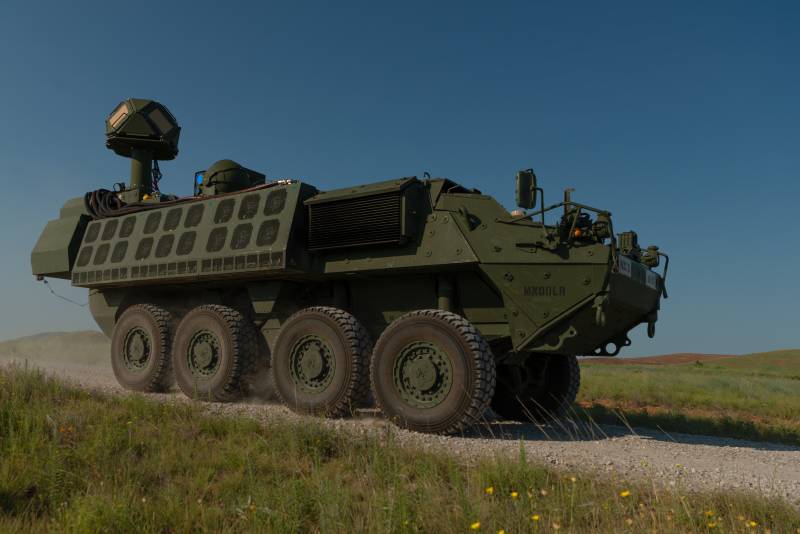
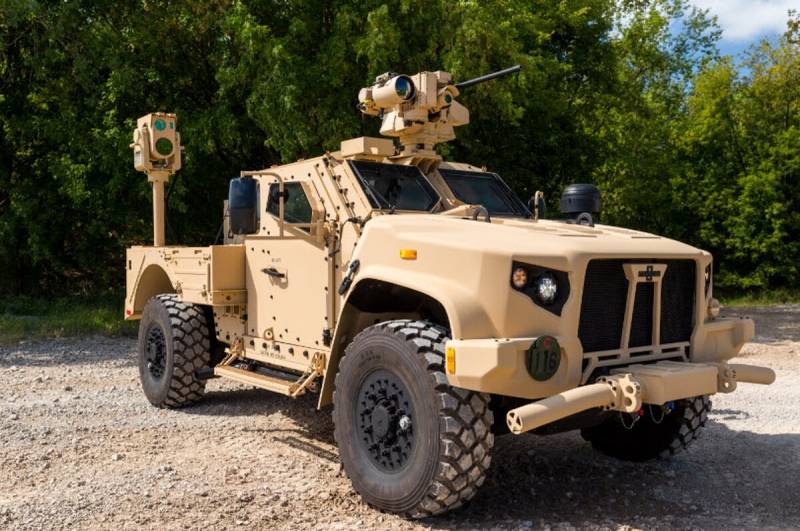
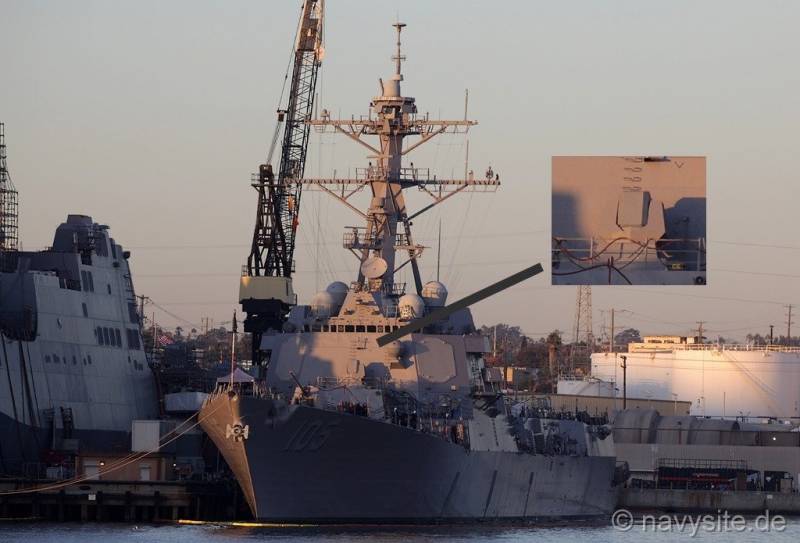
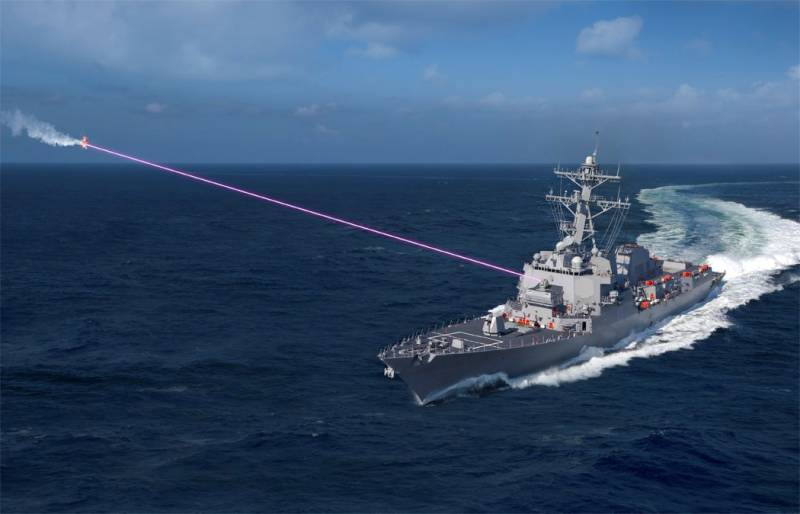
Information